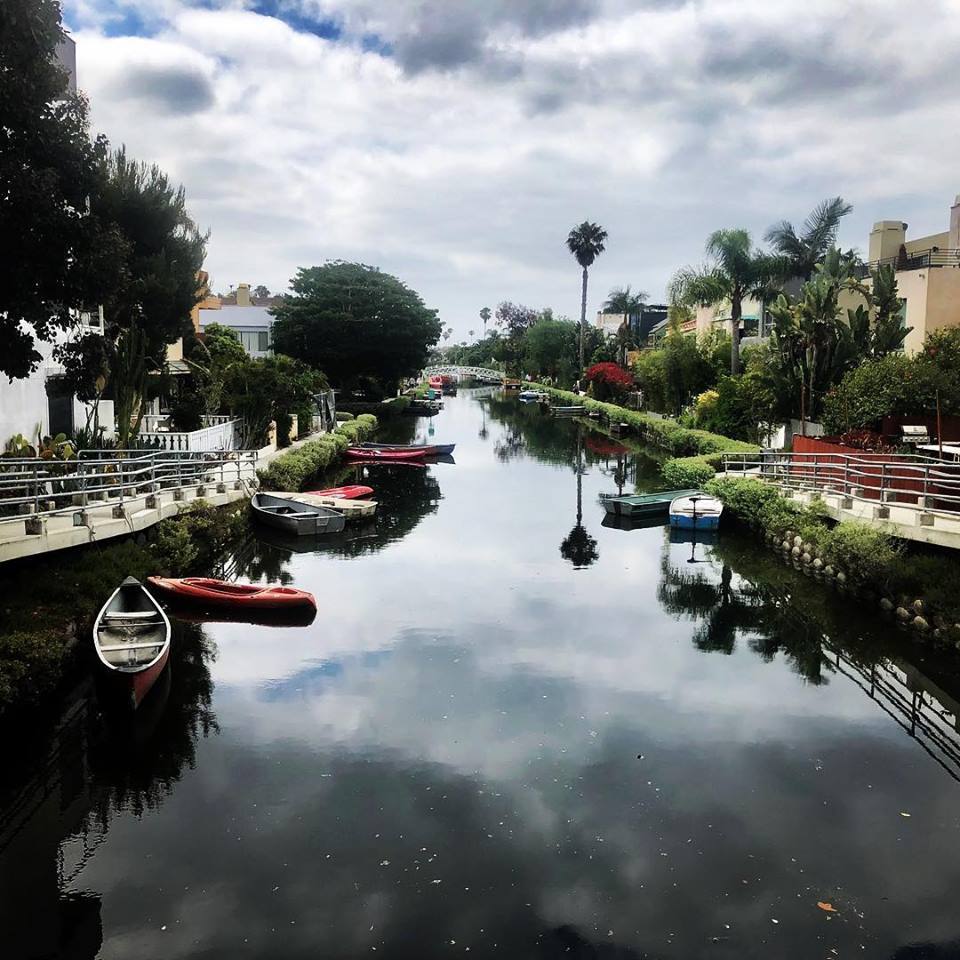Venice of America was created from one man’s dream of a Chautauqua-style resort, where city-dwellers came to the beach for opera and lectures, vacationed in tiny houses along canals, and travelled via gondola or a miniature railway.
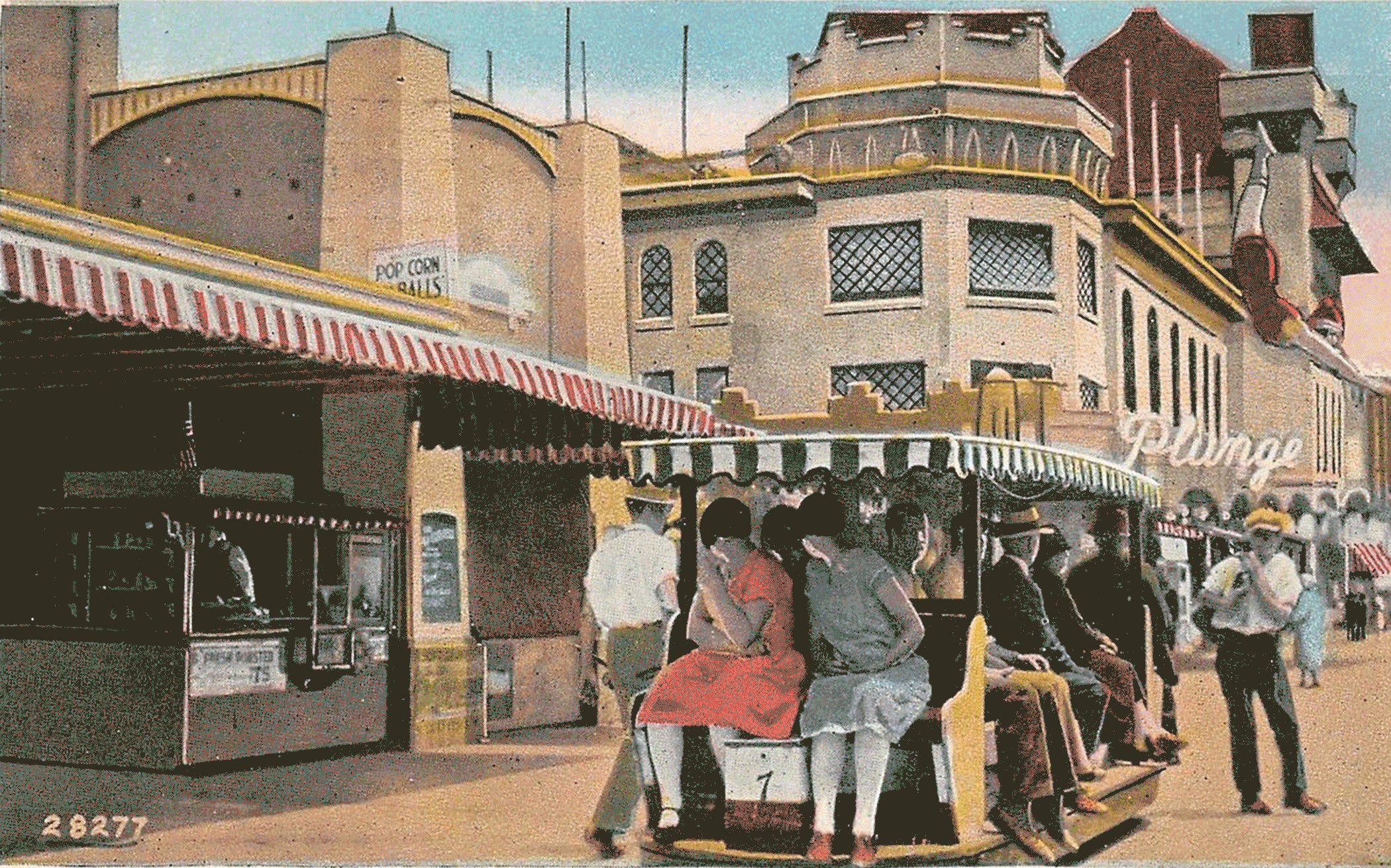
Within just a year or two of its opening in 1905, Abbot Kinney gave in to popular demand, and high culture was replaced by carnival barkers and roller coasters, bowling alleys and bathhouses, and the original Ferris wheel from Chicago’s World Fair, drawing tens of thousands of tourists. After Kinney’s death in 1920, a power struggle developed and Venice fell into disrepair. Annexed by the City of Los Angeles in 1926, the original canals were eventually filled with concrete, and oil wells dotted the landscape.
...As crime grew, rents dropped, and in time, skateboarders, hippies and artists moved in.
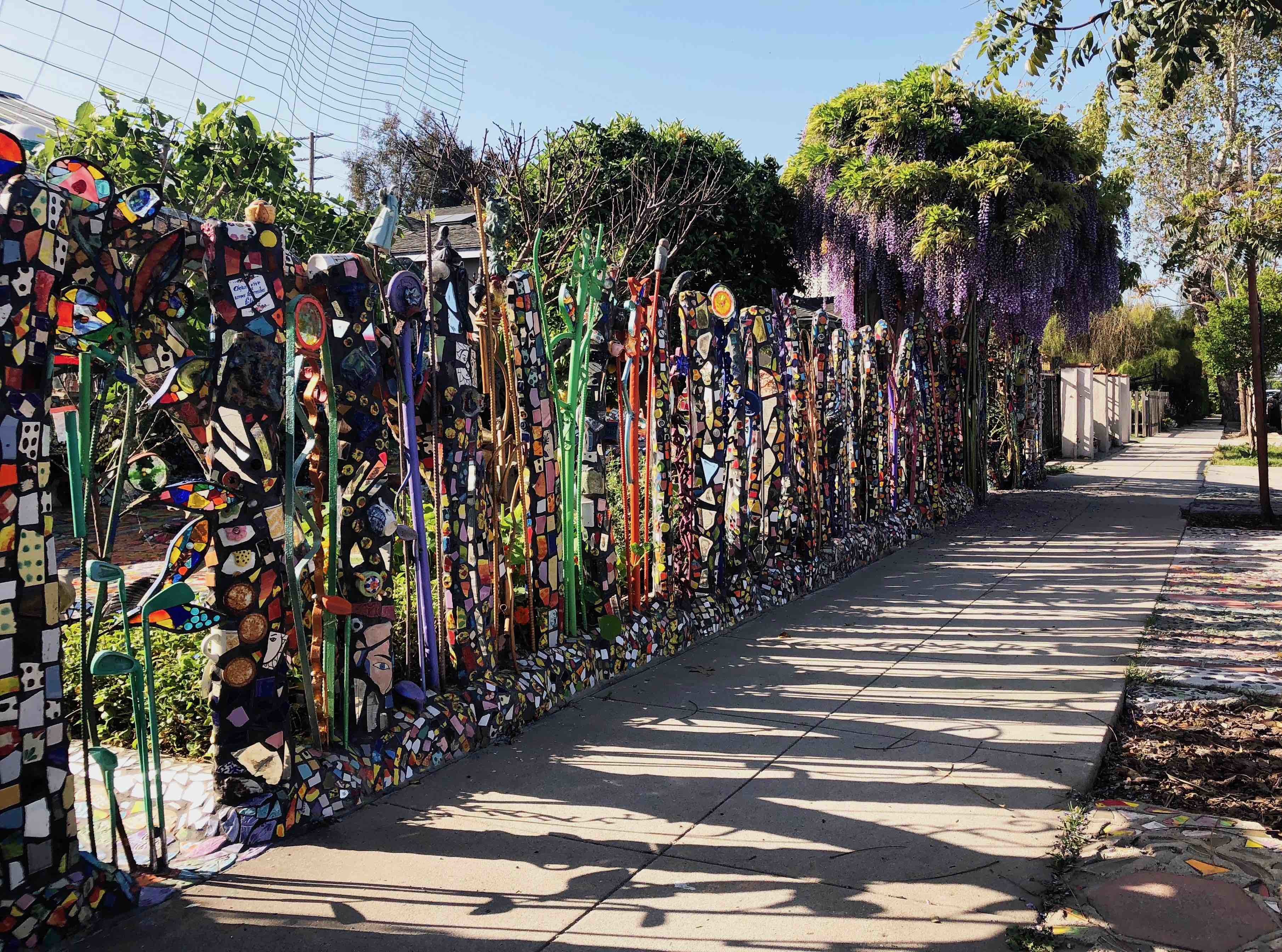
Venice has remained its own enclave of artists, freaks, beach bums, and eclectics while becoming one of the most expensive areas of real estate in Los Angeles – turning from Muscle Beach to Silicon Beach. But the street grid turns and kinks here, creating hidden pockets where moments of the unexpected can still be found.
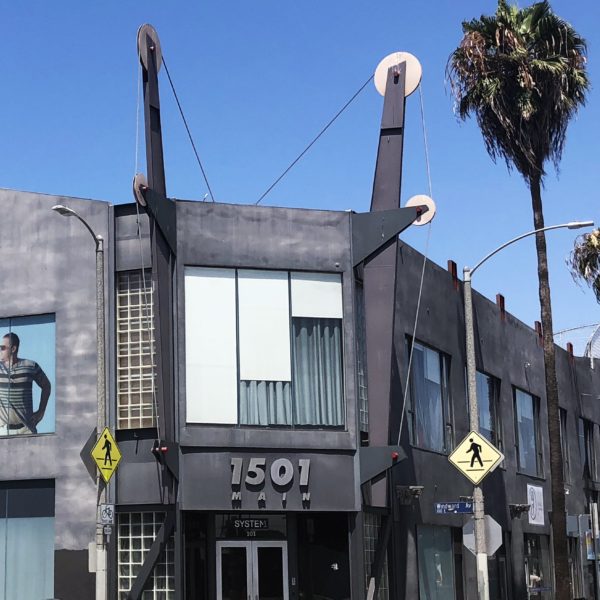
1501 Main Street

Race Through the Clouds
Windward Circle remains the heart of Venice. Originally a lagoon where the main canals intersected, today it still functions as a traffic circle, but for cars. The iconic “VENICE” sign suspended over Windward Ave is a contemporary version of the original sign that lit up in 1905 and still acts as a welcoming gateway. The colonnaded building below the sign is one of the few structures left from that time. Contemporary buildings address Venice’s history through homage or pastiche: across the circle, the 1501 Main Street building façade honors the pulleys originally used to dig the canals while the Race Through the Clouds building (1600 Main Street) evokes the rollercoaster that used to be there. Just down the street is Townhouse (52 Windward Ave) which originally opened as Menotti’s Bar in 1915 before becoming a street-level grocery and a basement speakeasy during Prohibition, with hooch from Canada carried by small boats under the former pier and into the bar (and the rest of Venice) through subterranean service tunnels. After Prohibition ended in 1933, the speakeasy became the Club Del Monte, which is still open today.
Continue down to the beach and walk the famous Venice Boardwalk, which has retained much of its character even if the Freakshow has closed and Snap Inc. (makers of Snapchat) has moved in. (Recently, Snap put more than half of its office space in Venice up for lease and will be consolidating in an office park in Santa Monica.)

In the 70s, when Venice was at its nadir, a new beach-side bike path connecting Santa Monica to Torrance was built.
Surfers started taking to the streets, the kick-tail and the polyurethane wheel was born, and soon the Slum by the Sea became Dogtown, with skateboarders taking advantage of abandoned streets and pools emptied by the drought. One of their haunts was “the Pit” – an outdoor amphitheater originally built in 1961 that fell into disuse and became a gathering place for graffiti artists and skateboarders. Eight years ago, the structure was torn down and filled with sand, leaving only the Venice Art Walls that artists are still tagging today, albeit with permits. Now there’s an official beachfront skate park that’s always full and Venice Beach will be hosting skateboarding at the 2028 Summer Olympics.
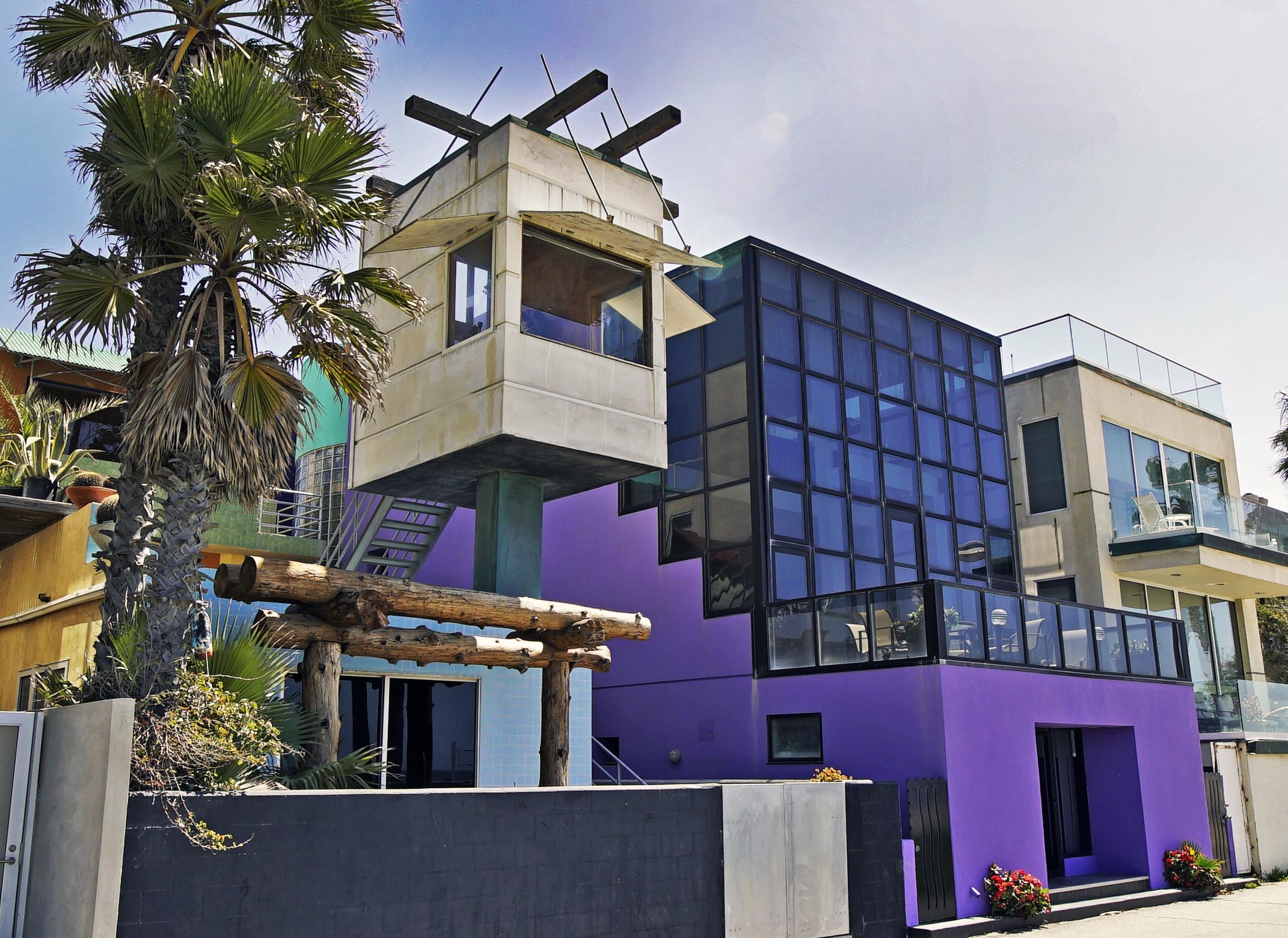
Keep going south on the boardwalk until it turns residential, where you can peer into the houses along Ocean Front Drive and imagine having the beach outside your door. The Norton House (2509 Ocean Front Walk) by Frank Gehry is a collage of colorful shapes, with the elevated study fashioned after a lifeguard post, and successfully combines visual fun for the public and privacy for the residents. Next door, the Snipper House (2511 Ocean Front Walk) by Miguel Angelo Flores is a very different Modernist take on a beach house. Contemporary steel-and-glass boxes are taking over the frontage but here and there you can still find a woodsy Craftsman or modest bungalow.
Turning inland from the beach, you come across the Venice Canals (bounded by North Venice Blvd and Ocean, 28th and Pacific Aves). They do still exist! These were actually a set a copycat canals, built just south of the original development by real estate promoters hoping to piggy-back on the success of the original. When the original canals were filled in with concrete, there were so few residents by the south canals that the City couldn’t raise the taxes to finance filling them in. Today, they form one of the most picturesque places to live in LA. A Cape Cod next to a storybook castle, a modern box next to a Spanish-style mansion, the mish-mash of styles creating its own charm in a tranquil setting.
(If you wish to see the canals that have been paved over, take a drive to what used to be United States Island, the triangle bordered by Windward Avenue (Lion Canal), Cabrillo Street (Cabrillo Canal), and Altair Place (Altair Canal). The tiny vacation rental houses, built in 1913, were each named for a different state, thus the island’s name. The palm trees lining the triangle are over 100 years old.)
Proceeding northeast of the existing canals brings you to Abbot Kinney Boulevard, the premier shopping street of Venice fittingly named after its founder. Just a block off of Abbot Kinney Blvd, the Islamo-Byzantine style house that Kinney himself commissioned still stands at 1223 Cabrillo Avenue and is on the National Register of Historic Places.
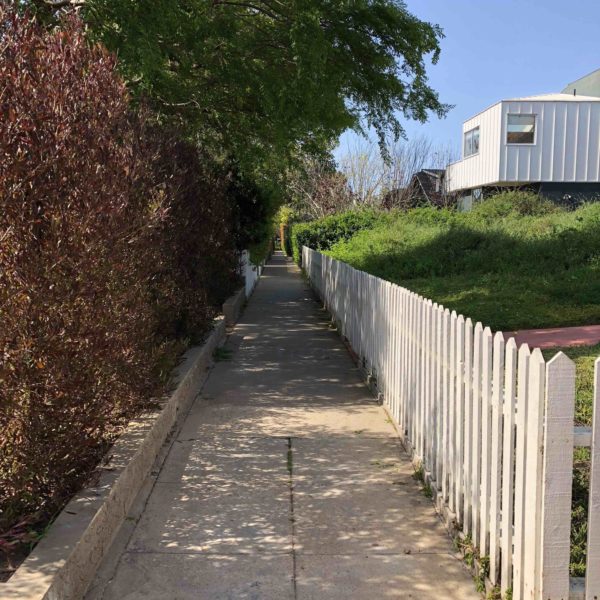
Walk Streets

Binocular Building
Continuing north of Abbot Kinney Blvd brings you to the walk streets of Venice – so hidden that even many an LA local may not know they exist. The walk streets include Nowita Place, Marco Place, Crescent Place, and Ambroso Place, west of Lincoln Blvd and east of Shell Avenue. Originally laid out by Kinney, the walk streets were a central feature of a development built on a pedestrian lifestyle in a time before the car was king. Each house has its front yard and entrance off a narrow path, with garage access from rear alleys. The walk streets are an instant escape from the noise and crowds. Small bungalows, modern mansions, hand-tended gardens, all create a personal yet communal space. On the northwest side of Nowita Place, midway between Oakwood Ave and Shell Ave, the Nowita House was designed by architects Julie Smith-Clementi and Frank Clementi (partners at Rios Clementi Hale) for themselves and Smith-Clementi’s mother, who bought the lot next door. They have created a two-family compound that remains respectful of the scale of the neighborhood, along with a shared garden that creates an inviting glimpse of open space to passers-by.
Written by Krystal Chang
Also check out:
Binocular Building, 340 Main Street
Created by artists Claes Oldenburyg and Coosje van Bruggen, the binoculars housed conference rooms (with the lenses as skylights of course!) for the Chiat/Day advertising office designed by Frank Gehry. Today, it is occupied by Google.
Mosaic Tile House, 1116 Palms Blvd
Artists Cheri Pann and Gonzalo Duran has transformed their 1940s bungalow home into a colorful hand-crafted fantasia of glass and tile. Open Saturdays.
Hopper House (and Arnoldi Triplex), 330 Indiana Ave
The minimalist house with its distinctive corrugated metal façade was turned into an architectural compound when actor Dennis Hopper bought the adjacent two lots, adding the Frank Gehry-designed Arnoldi Triplex on one side and a hundred year old Craftsman cottage on the other.
